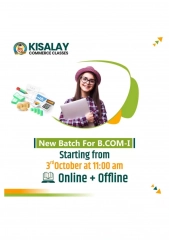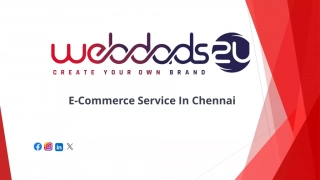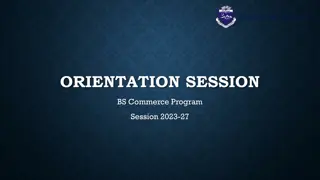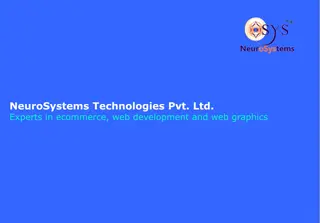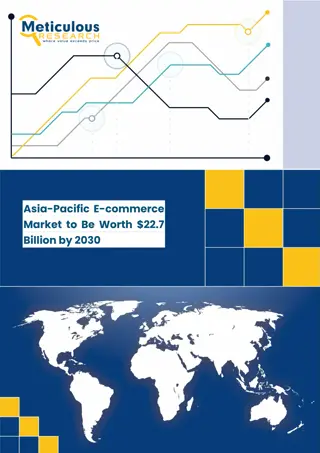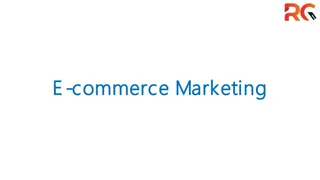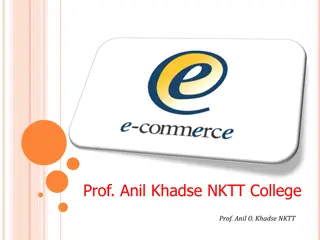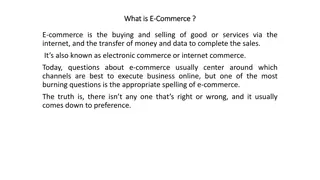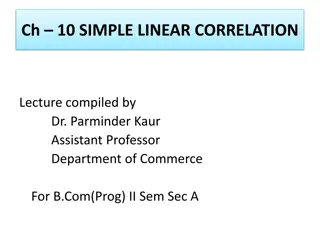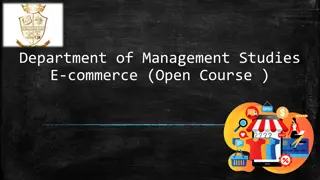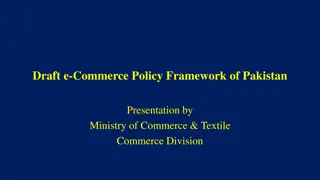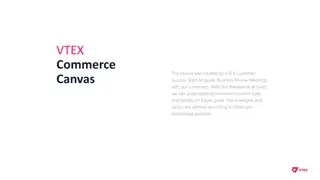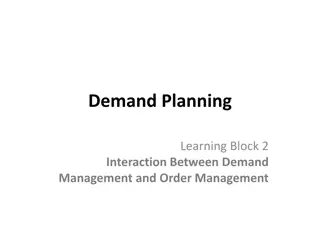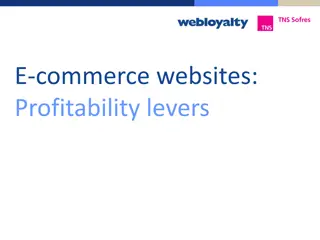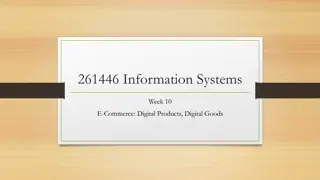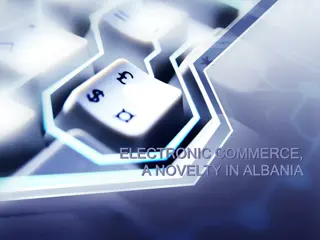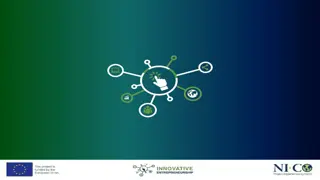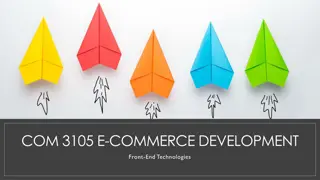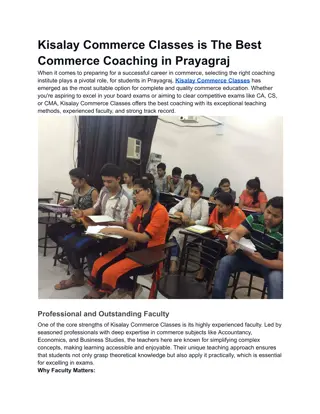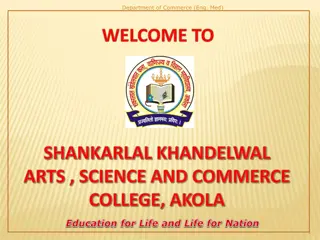Understanding E-Commerce and Its Technologies
E-Commerce, or Electronic Commerce, revolutionizes modern business by improving cost efficiency, quality of goods and services, and delivery speed. Key technologies like Electronic Data Interchange (EDI), e-mail, and Electronic Fund Transfer (EFT) drive this transformation. SaaS and open-source solutions offer flexibility and customization options, while headless e-commerce separates front-end presentation from back-end functionality for enhanced content leverage. Major e-commerce activities include online selling, buying, payment processing, and business transactions. Embrace the digital era to enhance business capabilities.
Download Presentation

Please find below an Image/Link to download the presentation.
The content on the website is provided AS IS for your information and personal use only. It may not be sold, licensed, or shared on other websites without obtaining consent from the author. Download presentation by click this link. If you encounter any issues during the download, it is possible that the publisher has removed the file from their server.
E N D
Presentation Transcript
E-Commerce or Electronics Commerce is a methodology of modern business, which addresses the need of business organizations, vendors and customers to reduce cost and improve the quality of goods and services while increasing the speed of delivery
Electronic Data Interchange (EDI) Electronic Mail (e-mail) Electronic Bulletin Boards Electronic Fund Transfer (EFT) Other Network-based technologies
SaaS. Open source. Headless commerce.
SaaSstands for software as a service. Users subscribe as opposed to buying to software that the vendor continues to host, maintain and improve. SaaSplatforms, on average, come with more out-of-the-box functionality. And, while customization is limited, SaaSplatforms today are becoming more and more flexible thanks to APIs and pre-built integrations.
Open-source ecommerce isa type of software that gives the user full access to the source code, meaning anyone can modify and customize the platform to meet their specific needs and use a compostable architecture approach.
Headless e Commerce isthe separation of the technologies used in the front-end presentation layer from the back-end e Commerce functionality of your e Commerce website. This helps ensure maximization of content use and also leverage your back-end e Commerce platform across multiple front-ends.
The major activities of ecommerce are as follows Selling products and services online (through internet) Buying products and services online Paying and accepting payment online Transaction of businesses and other services online
It efficiently increases the business capability. It substantially reduces the cost. It perceptively increases the delivery services. It unbreakable solution of quick business transactions and office automation. It potentially increases the intra-business functionality. It competently increases the business communication.
Following are the major types of e-commerce businesses Business-to-Business (B2B) It is conducted between two business firms. Business-to-Consumer (B2C) It is conducted between the business firm and the consumer. Consumer-to-Consumer (C2C) Consumer-to-consumer business deals happen between two consumers; there are certain websites that facilitate a common platform to both the consumers -one who wants to buy and one who wants to sell.
It facilitates free market. It is available 24 7. Its presence is global (there is no constrain of political boundary as such). Set up cost is substantially low. It provides user-friendly technology. It offers multiple opportunity parallel and simultaneously. It provides frugal facilities to promote and market businesses. It has features to offer market research facility. It makes customer relations management easier. It facilitates the provision of 24 7 customer care services. It provides fund transfer facility domestically as well as internationally with simple steps.
Media broadcasting, narrowcasting, cable casting or webcasting of courtproceedingsbythe media usingTV,radio,photographic, recording,or otherelectronicdevices. coverage means any reporting, recording,
Multimedia Content for E-Commerce Applications Multimedia Storage Servers & E-Commerce Applications i. Client-Server Architecture in Electronic Commerce ii. Internal Processes of Multimedia Servers iii. Video Servers & E-Commerce Information Delivery/Transport & E-Commerce Applications Consumer Access Devices
Multimedia content can be considered both fuel and traffic for electronic commerce applications. The technical definition of multimedia is the use of digital data in more than one format, such as the combination of text, audio, video, images, graphics, numerical data, holograms, and animations in a computer file/document. See in Fig. Multimedia is associated with Hardware components in different networks. The Accessing of multimedia content depends on the hardware capabilities of the customer.
E-Commerce requires robust servers to store and distribute large amounts of digital content to consumers. These Multimedia storage servers are large information warehouses capable of handling various content, ranging from books, newspapers, advertisement catalogs, movies, games, & X-ray images.
All e-commerce applications follow the client-server model Clients are devices plus software that request information from servers or interact known as message passing Mainframe computing , which meant for dump The server manages application tasks, storage & security & provides scalability-ability to add more clients and client devices( like Personal digital assistants to Pc s.
The internal processes involved in the storage, retrieval & management of multimedia data objects are integral to e- commerce applications. A multimedia server is a hardware & software combination that converts raw data into usable information & then dishes out. It captures, processes, manages, & delivers text, images, audio & video. It must do to handle thousands of simultaneous users. Include high-end symmetric multiprocessors, clustered architecture, and massive parallel systems.


